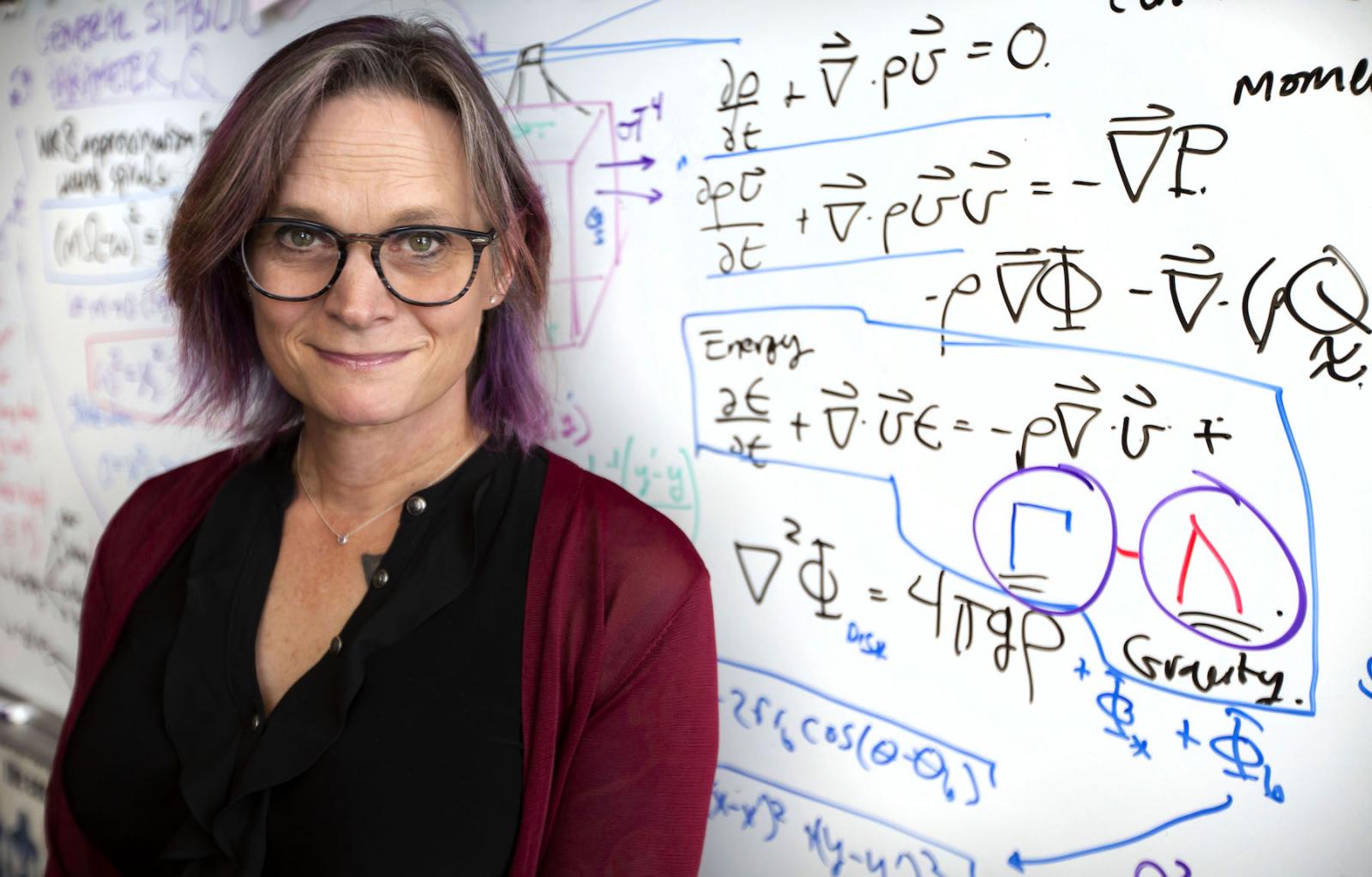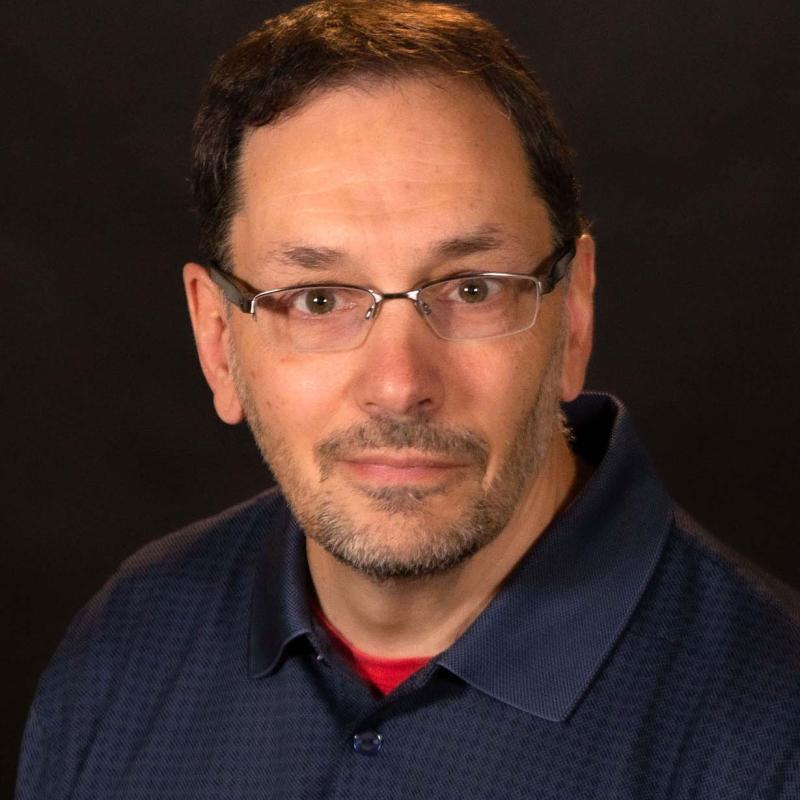If you sensed a surge of excitement in recent days coming from the halls of Lawrence University’s Youngchild, Steitz, and Briggs halls, you were not mistaken.
When the Nobel Prizes for chemistry and physics were announced earlier this month, the news hit close to home for a couple of science faculty members and their students, creating momentum for the research they’ve been working on here at Lawrence.
The same can be said for a pair of economics faculty members who have focused their research on topics tied to the groundbreaking Poor Economics, a book that’s been a mandatory read in Lawrence’s Freshman Studies since 2016. More on that later.
The win in chemistry went to three chemists — Stanley Whittingham, John Goodenough, and Akira Yoshino — who were instrumental 30 years ago in the development of the lithium-ion battery, which now powers many of our wireless electronics, most notably cell phones. That’s a subject near and dear to Allison Fleshman, an associate professor of chemistry who has dedicated much of her research over the past two decades to ion mobility, work that could potentially improve the next generation of those lithium batteries.
The win in physics, meanwhile, went to two astronomers — Michel Mayor and Didier Queloz (they split the prize with a cosmologist on a separate project) — who in the mid-1990s discovered a fiery, uninhabitable planet orbiting a distant sun-like star, a breakthrough that set the course for the discovery of thousands of exoplanets in the Milky Way galaxy. Megan Pickett, an associate professor of physics, was fresh off her Ph.D. and working for NASA when word of the discovery came through. She has since spent much of her career studying the formation of those stars and planets, simulating how solar systems are formed.
Both Fleshman and Pickett drew inspiration early in their careers from the groundbreaking work these scientists were doing. To see them now honored with Nobels, well, there were celebrations in recent days to rival those of football fans on a Sunday afternoon.
“As soon as the Nobels were announced, my Facebook was a flutter with all of my old colleagues from graduate school and my post-doctoral work,” Fleshman said. “We were all very, very excited. There’s a subgroup of scientists, and we were just going absolutely bonkers when we heard. And I may have run through the hallway shouting, ‘lithium for the win.’”
Pickett had a similar response when the physics award was announced, not just because she was happy for Mayor and Queloz but also because of the momentum and validation it provides for the science she and her students are doing in Youngchild.
“I was wondering when this group would get the Nobel Prize,” she said.
How solar systems form
It was in 1995 when Mayor and Queloz first announced the discovery of the Jupiter-like planet, having tracked a periodic wobble in the colors of light from the star that indicated a planet was circling. They determined it to be a four-day orbit. Scientists at the time already believed there were planets other than Earth that were orbiting sun-like stars. But they had no proof. And then they did.
“The scientific community was skeptical, as it ought to be with new discoveries like this,” Pickett said. “There had been a lot of false discoveries and false alarms in the past. But this stood the test of time. And as people started using this method, more and more solar systems were found. We now know of 4,000 planets that orbit stars.”
Physics at Lawrence
Pickett had just finished her Ph.D. at Indiana University earlier that year and was working at NASA’s Ames Research Center in Mountain View, California. She remembers hearing the news of the discovery like it was yesterday.
“I was in the space science research laboratory,” she said. “The entire floor that I was on, mostly theoretical astrophysicists, were running down the halls excited about this. Everyone at first was trying to show that it was wrong, but they were really excited. They were either excited one way or the other. If it was right, we would finally have proof that there were planets outside our solar system. And it turned out to be right.
“And it turned out to be the kind of stuff I was interested in studying. So, I was very lucky in terms of my career, being in the right place at the right time studying the right thing.”
Scientists now believe that the number of planets in our galaxy could number in the billions.
“Twenty years ago, or 25 years ago, you would have been laughed off the stage if you had said something like that,” Pickett said. “Now people are taking it very seriously based on the statistics we’ve seen.

Allison Fleshman, associate professor of chemistry, stands for a portrait in her lab in Lawrence University’s Steitz Hall of Science. (Photo by Danny Damiani)
The study of ions
Meanwhile, over in the Steitz chemistry labs, Fleshman and her students are busy talking about the charge that the Nobel announcement has given their work. They aren’t necessarily doing lithium battery research per se, but they’re studying a piece of the process that could affect the ongoing development of the battery technology. Fleshman has been doing research in and around that topic since her doctoral studies at the University of Oklahoma.
“Part of my Ph.D. was in developing a new way of describing ion transport, which is what this field of research is called,” Fleshman said. “Ion transport is how well the ions can move, or their mobility between two electrodes. If you have an electric field, how well can the ion adjust to responses in that electric field?”
Chemistry at Lawrence
Keeping that and related research alive could one day lead to changing the electrolyte — the chemical medium that carries the positively charged lithium ions — from a liquid to a solid, eliminating potential issues related to leakage or expansion in the battery.
“That would be kind of like the Holy Grail,” Fleshman said. “That’s the next big thing. Until then, the idea is to improve the material that carries the charge. My students and I apply a new model to describing that transport.”
The Nobel for the lithium-ion battery is a momentum changer in part because it’s something people can relate to. They may not understand the science behind it, but they appreciate the rapid advances in the cell phone and other electronic tools that they can hold in their hands. The message from Fleshman is simple — we’re not done yet.
“Once it gets to the consumer’s hands I think people assume there is no more innovation to be made,” she said. Not true. While the Nobel award acknowledges that the work of Whittingham, Goodenough, and Yoshino was cutting edge, there are a lot of questions yet to be answered.
“If you’re in the field, you know these questions,” Fleshman said. “You know there are limitations with the electrolyte. There’s a misunderstanding about why lithium moves. There are misunderstandings of how lithium interacts with the electrolyte as a whole.”
The possibilities for the next generation of lithium batteries are just now being explored, and it’s more than just making our electronic toys run faster. The prospect of communities redirecting some of their energy usage in more sustainable ways is in play.
“The Nobel puts those questions on the international stage,” Fleshman said of the continued study of lithium technology. “I think it gets more people interested, people who thought the technology was basically at its end. We’ve made a lithium battery. It works great. My cell phone stays charged for forever. But there is so much more innovation to be had.
“There are really good scientists out there trying to answer the question of how can we redirect our energy demands to energies that are sustainable, and rewarding those scientists with a Nobel is yet another way of saying we need a global conversation about renewable energy sources,” Fleshman said.
The book on development economics
When the winner of the Nobel in economics was announced, you might have heard a smattering of applause across campus. The work of development economists Abhijit Banerjee and Esther Duflo of M.I.T. and Michael Kremer of Harvard is plenty familiar to students and faculty here. The 2011 book from Banarjee and Duflo, Poor Economics: A Radical Rethinking of the Way to Fight Global Poverty, has been part of Freshman Studies since 2016, meaning most every current Lawrence student has dissected the book at some point over the past four years, or will next term.

Hillary Caruthers

Dylan Fitz
The book — and now the Nobel – has shined a light on the growing field of development economics. In this case, it’s the work of economists who zero in at the micro level in the study of poverty and other economic issues in developing countries, gathering and using specific on-the-ground data to analyze outcomes. Instead of taking a big picture view, they run real-world trials of local groups or communities to test how certain factors — be it in the areas of education, health care, food, family planning or others — are affecting the economics of a region.
Nowhere on the Lawrence campus was the applause for the Nobel louder than in the offices of Hillary Caruthers and Dylan Fitz, both assistant professors of economics who specialize in the micro approach to development economics. Both have counted the Poor Economics authors and Kremer as role models since their graduate school days a decade ago, even before the book was published.
“I do find it extremely validating,” Caruthers said of the Nobel announcement. “It’s exciting that when you look at all of the Nobel laureates going back through time, this is by far the closest to our research. So, it’s exciting to see people be honored who we have admired and who have inspired us in our field of study and have really shaped the field so much. It’s like seeing our idols rewarded for their work.”
Economics at Lawrence
Caruthers and Fitz said they both were driven to pursue development economics on the micro level because it is so tightly tied to the people affected. It is analysis of open-ended micro data from individuals and households with an expectation that it’ll add to the larger economics conversation, and, in the end, help improve living conditions.
It’s not that the more macro approach to development economics isn’t valuable, Fitz said. It’s just the micro approach and what it can bring to the table is another important piece, and it’s what drew him to the field.
“The type of work in Poor Economics is why I’m an economist,” he said.
Some of the research done by Caruthers, for example, has focused on how poor nutrition in utero can affect someone through life. That touches on the same themes explored in Poor Economics, studying how early health care, or lack thereof, can have ramifications that affect one’s ability to ever escape poverty.
“Economics is a social science, of course, but often it’s easy to forget that we are ultimately interested in people and the well-being of humans,” Caruthers said. “So, de-emphasizing systems and instead emphasizing that micro impact is very appealing to me as a scholar.”
Poor Economics has been a great fit for Freshman Studies, introducing non-economics students to a part of the economics curriculum many don’t know exists.
“A lot of freshmen come in and they don’t know what economics is,” Fitz said. “Some of them think it is just business or just defending free markets, which is not at all the case. Economics is something that can help us make the world a better place — to try to understand the world first of all, and then to improve it for people.”




